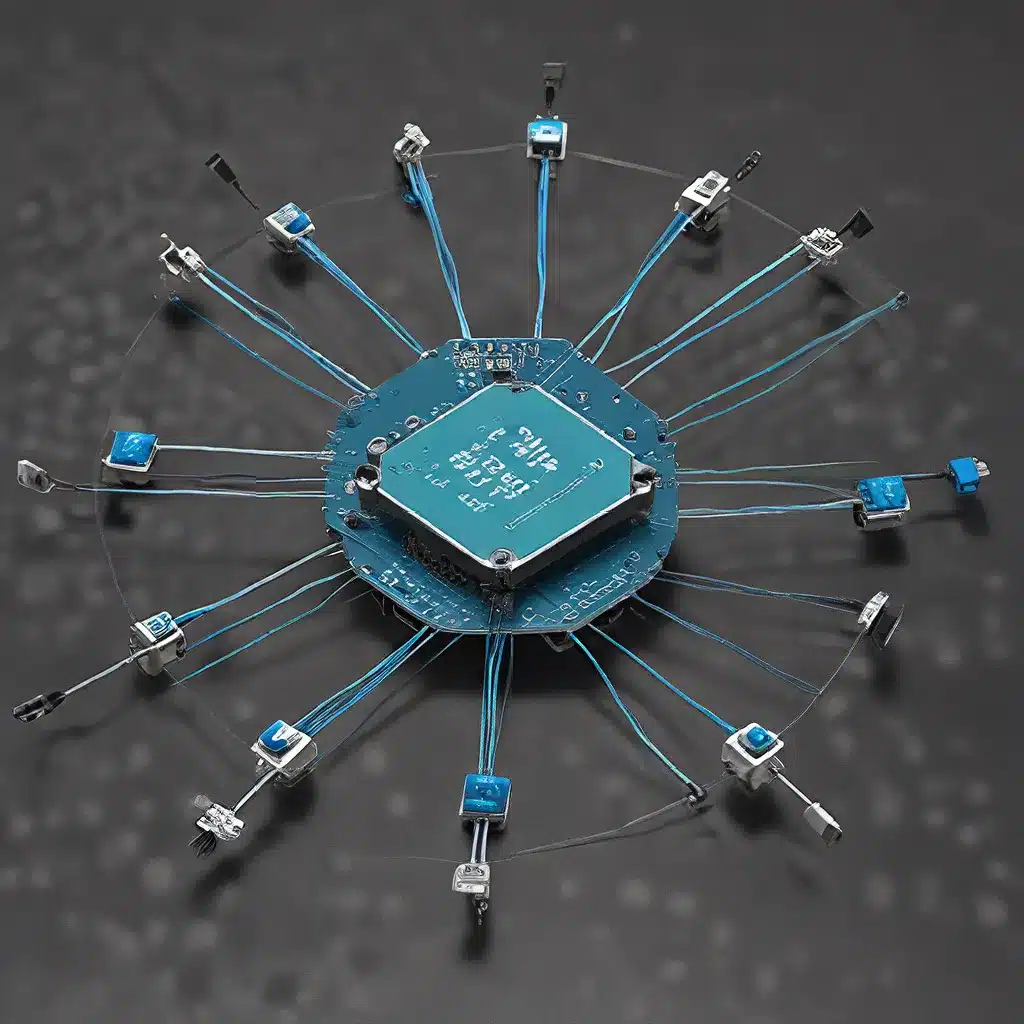
The Evolving Landscape of Sensor Networks
Sensor networks have evolved significantly in recent years, driven by advancements in microelectronics, wireless communication, and data processing technologies. These networks have become increasingly autonomous, capable of self-configuring and self-healing to adapt to changing environments and ensure reliable data collection and transmission.
At the heart of this transformation lies the concept of sensor autonomy, which empowers individual sensors with the ability to make intelligent decisions and coordinate their actions within the larger network. By incorporating machine learning and artificial intelligence algorithms, sensors can now self-organize, self-optimize, and self-repair, reducing the need for manual intervention and enhancing the overall resilience and efficiency of the system.
Self-Configuring Sensor Networks
One of the key aspects of sensor autonomy is the ability of sensor nodes to self-configure in response to dynamic conditions. This capability is particularly important in scenarios where sensor networks are deployed in remote or inaccessible locations, or where the network must adapt to changes in topology, environmental conditions, or resource availability.
Self-configuration often involves the sensors’ ability to discover neighboring nodes, negotiate communication parameters, and establish optimal routing and data aggregation strategies. By autonomously adjusting their transmission power, communication protocols, and data processing algorithms, sensor nodes can optimize the network’s efficiency and robustness while minimizing energy consumption and latency.
Self-Healing Sensor Networks
Another crucial aspect of sensor autonomy is the self-healing capability, which allows sensor networks to recover from failures or disruptions without the need for manual intervention. This is particularly important in critical applications, such as environmental monitoring, disaster response, and infrastructure management, where the continuous and reliable operation of the sensor network is paramount.
Self-healing mechanisms in sensor networks typically involve fault detection, component redundancy, and dynamic reconfiguration. Sensors can monitor the health of their neighboring nodes, identify and isolate faulty or compromised components, and automatically reorganize the network topology to bypass the affected areas and maintain overall connectivity and data flow.
IoT Applications and Sensor Autonomy
The rise of Internet of Things (IoT) has further amplified the importance of sensor autonomy, as IoT systems rely heavily on distributed sensor networks to collect, process, and transmit real-time data from a wide range of environments and applications.
IoT applications that benefit from autonomous sensor networks include smart cities, precision agriculture, industrial automation, healthcare monitoring, and environmental conservation. In these scenarios, self-configuring and self-healing sensor nodes can adapt to changing conditions, optimize resource utilization, and ensure continuous data availability and reliability, enabling more effective decision-making and actionable insights.
Security Challenges and Countermeasures
As sensor networks become more interconnected and autonomous, security emerges as a critical concern. The distributed nature of these systems, coupled with the limited resources of individual sensors, makes them vulnerable to a variety of cyber threats, such as eavesdropping, unauthorized access, and denial-of-service attacks.
To address these security challenges, autonomous sensor networks must incorporate robust security mechanisms, including encryption, authentication, and intrusion detection. Sensor nodes can self-monitor their security posture, identify and isolate compromised devices, and dynamically adjust their security protocols to mitigate the impact of attacks and maintain the integrity of the network.
Energy Management and Sustainability
The energy efficiency of sensor networks is another crucial aspect of sensor autonomy, as battery-powered sensor nodes must conserve their limited energy resources to ensure long-term operation and sustainability.
Autonomous sensor networks can optimize their energy consumption through dynamic duty cycling, adaptive sampling, and in-network data processing. Sensors can self-monitor their battery levels, adjust their sensing and communication activities accordingly, and coordinate with neighboring nodes to balance the energy load across the network.
By integrating energy harvesting technologies, such as solar, wind, or thermal energy, autonomous sensor networks can further enhance their sustainability and reduce their reliance on finite energy sources.
Conclusion
The era of sensor autonomy has ushered in a new paradigm of self-configuring and self-healing sensor networks, empowering these systems to adapt to dynamic environments, optimize their performance, and ensure reliable and resilient data collection and transmission.
As the Internet of Things continues to expand, these autonomous sensor networks will play a pivotal role in enabling a wide range of innovative applications, from smart city management to precision agriculture and environmental monitoring.
By addressing the security and energy challenges inherent in these distributed systems, sensor autonomy will pave the way for a more sustainable, resilient, and interconnected future, where sensor networks seamlessly integrate with our everyday lives and transform the way we interact with the physical world.
To learn more about the latest advancements in sensor networks and IoT, visit sensor-networks.org.